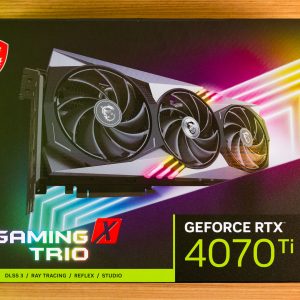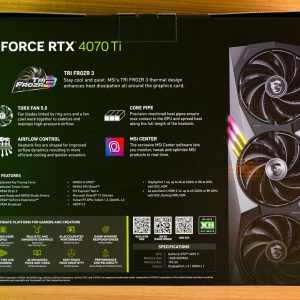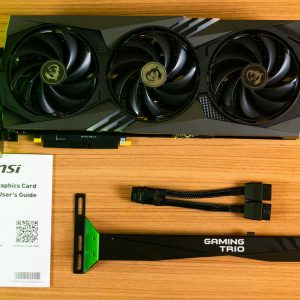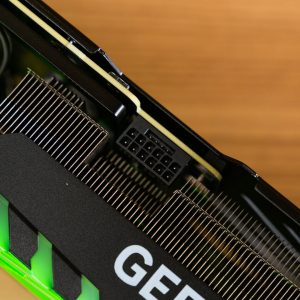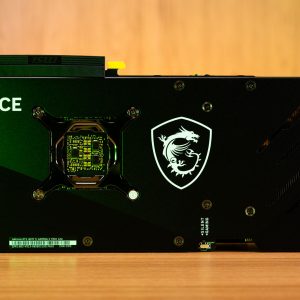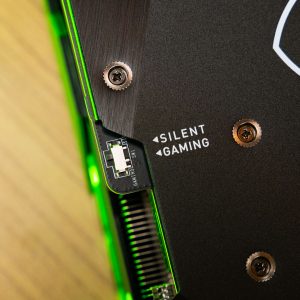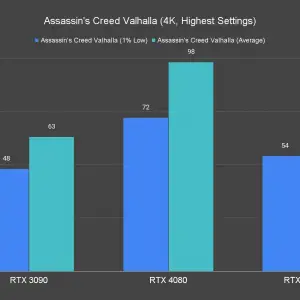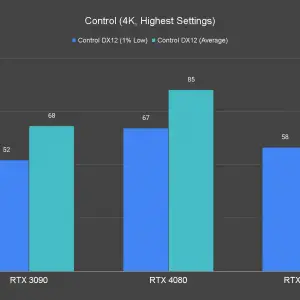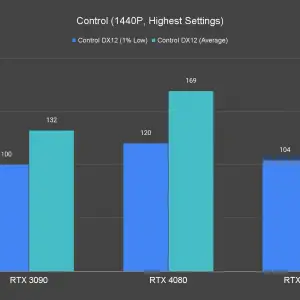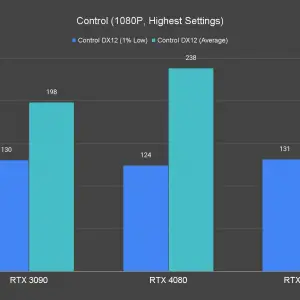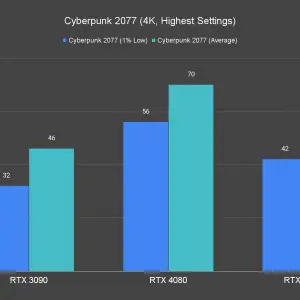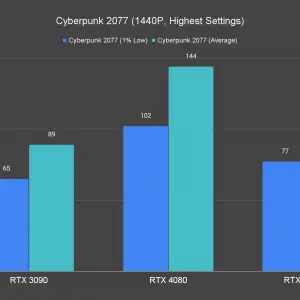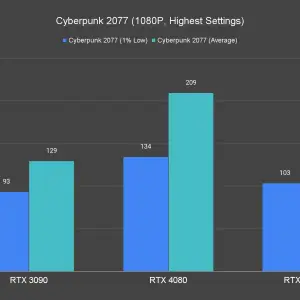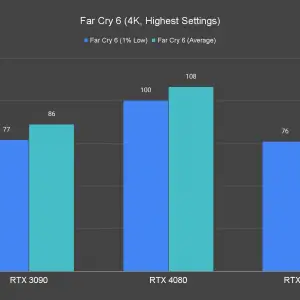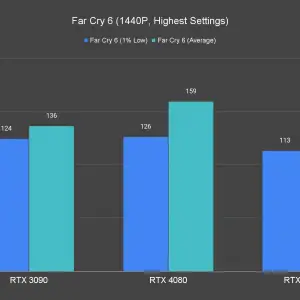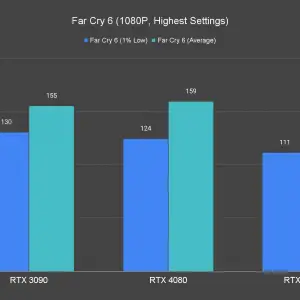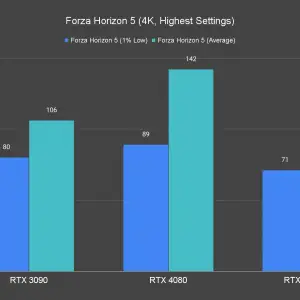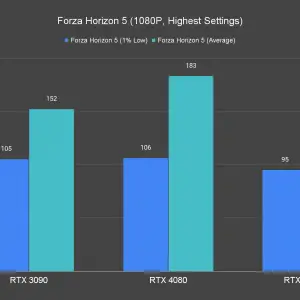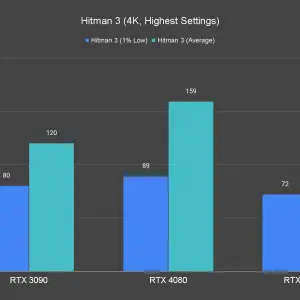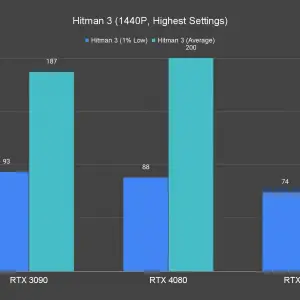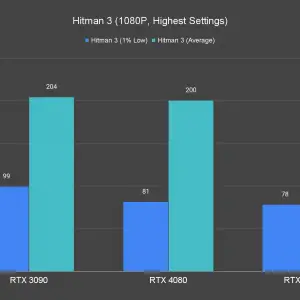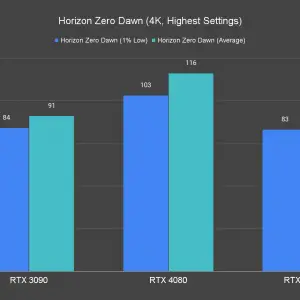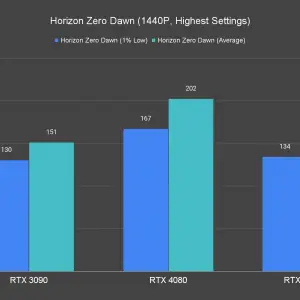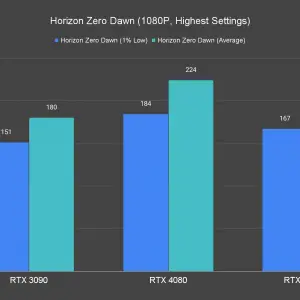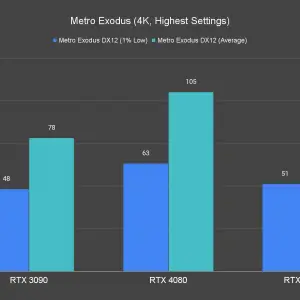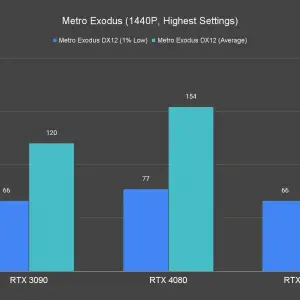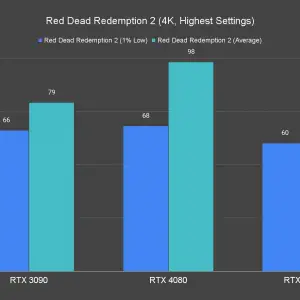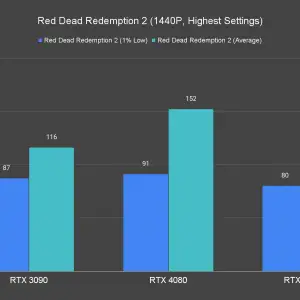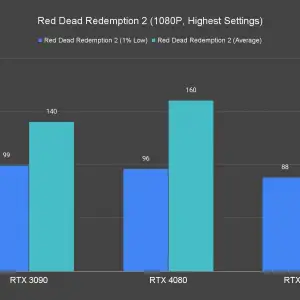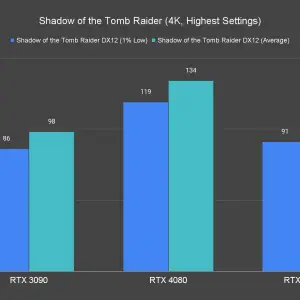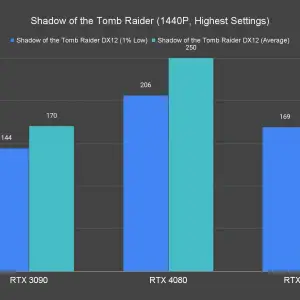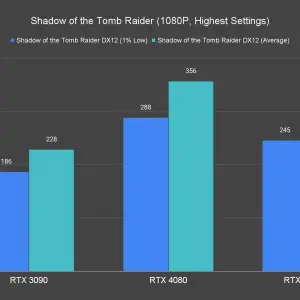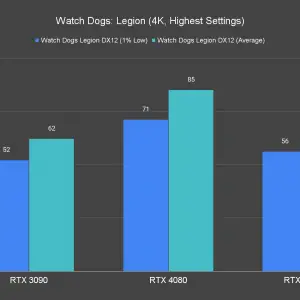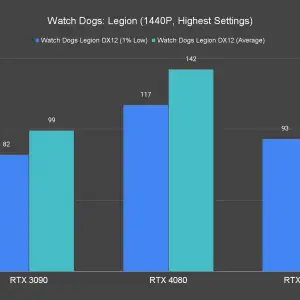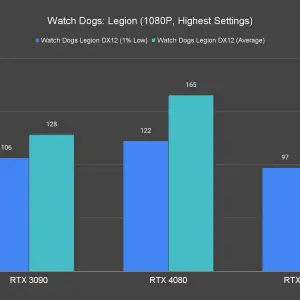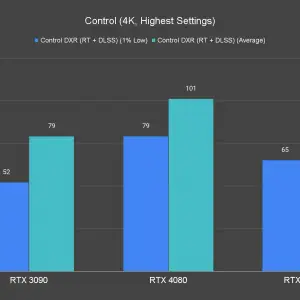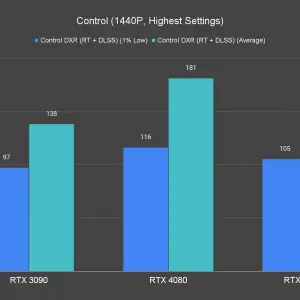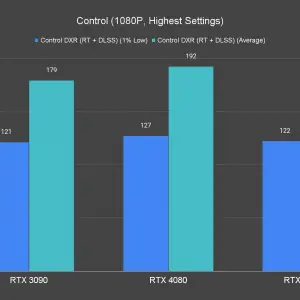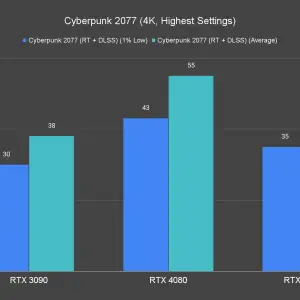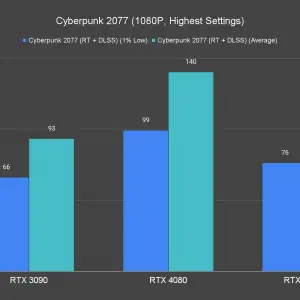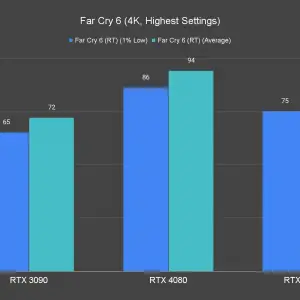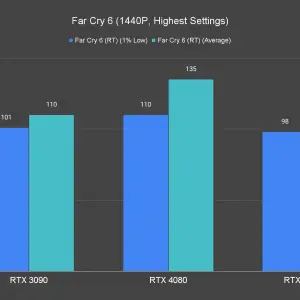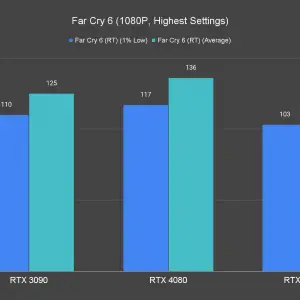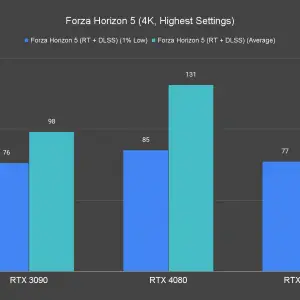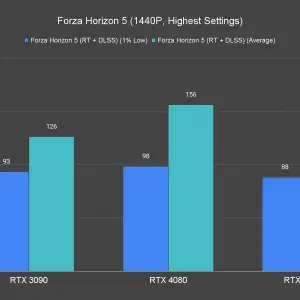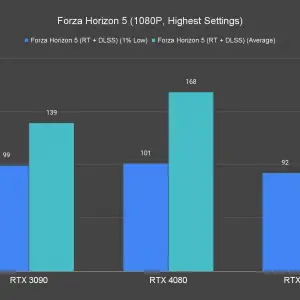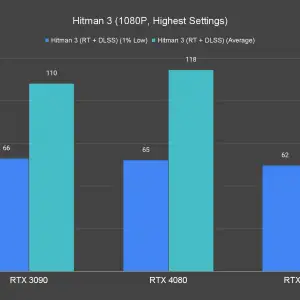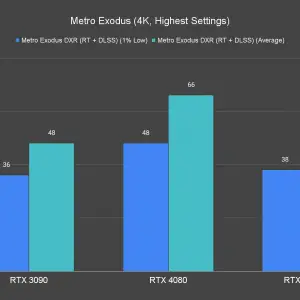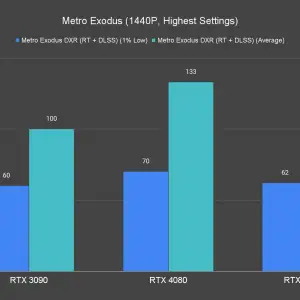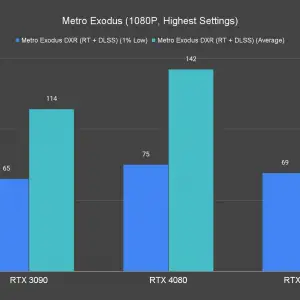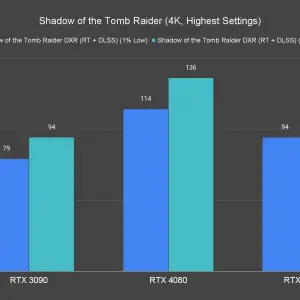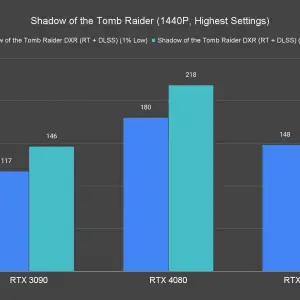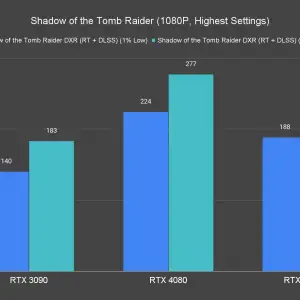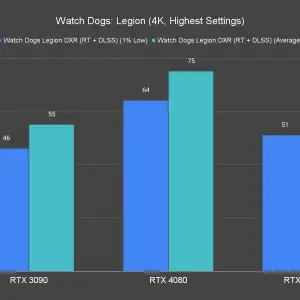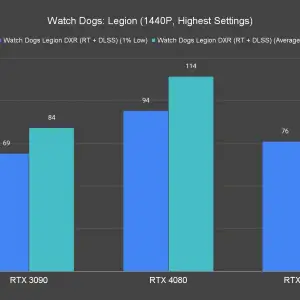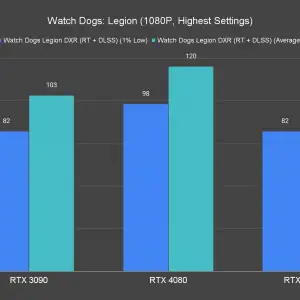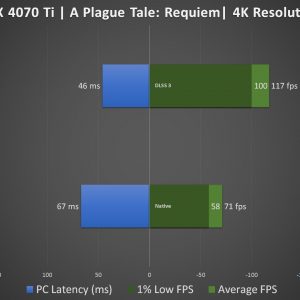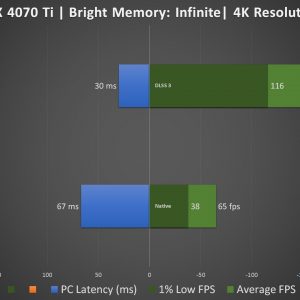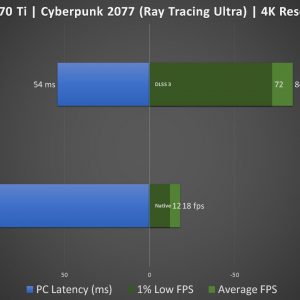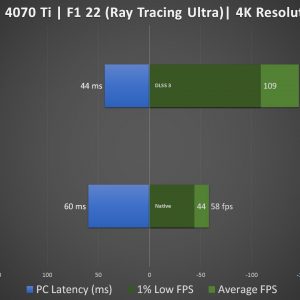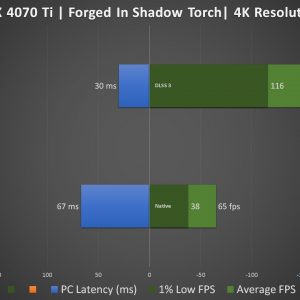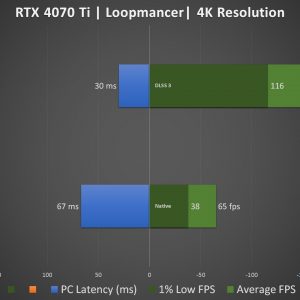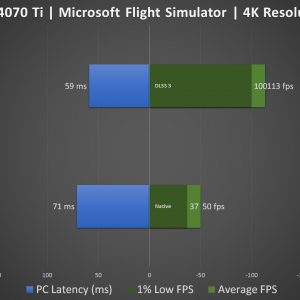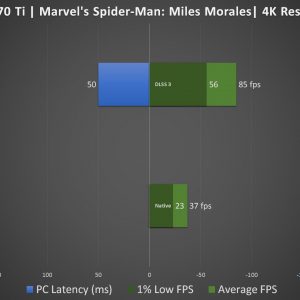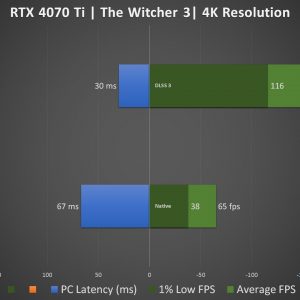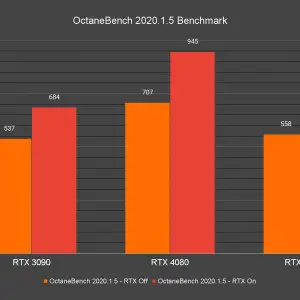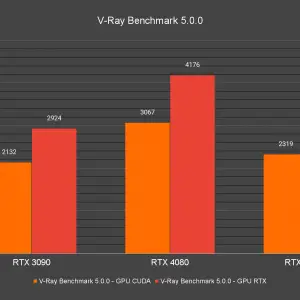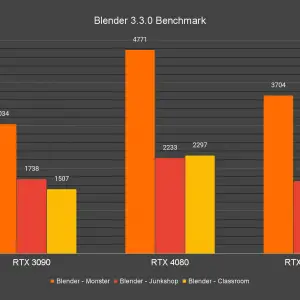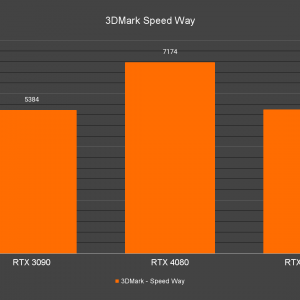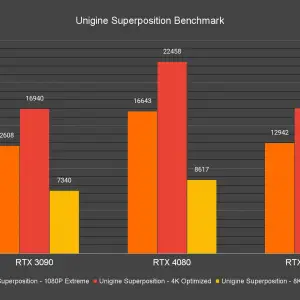While it’s already a known fact that the GeForce RTX 4070 Ti is rebranded from the previously canceled RTX 4080 12GB, it is still a very powerful GPU that offers almost every feature you can expect to see on the higher RTX 40 series graphics cards. We have tested a handful of RTX 4070 Ti so far and this time, we will be taking a look at the RTX 4070 Ti Gaming X TRIO from MSI.
In this review, we have tested the RTX 4070 Ti Gaming X TRIO against the GeForce RTX 3090 and RTX 4080 just to have a better idea of its performance. Is the RTX 4070 Ti just as what NVIDIA has advertised, a GPU targeted at 1440p gaming, or can it do more than just 1440p gaming?
Specifications
| GPU | GeForce RTX 3090 | GeForce RTX 4080 | GeForce RTX 4070 Ti |
| CUDA Cores | 8704 | 9728 | 7680 |
| Tensor Cores | 272 | 304 | 240 |
| RT Cores | 68 | 76 | 60 |
| ROPs | 96 | 112 | 80 |
| GPU Boost Clock | 1695 MHz | 2505 MHz | 2610 MHz |
| Memory Data Rate | 24 Gbps | 22.4 Gbps | 21 Gbps |
| Total Video Memory Size | 24G GDDR6X | 16G GDDR6X | 12G GDDR6X |
| Memory Interface | 384-bit | 256-bit | 192-bit |
| Memory Bandwidth | 936.2 GB/s | 716.8 GB/s | 504 GB/s |
| TDP | 350W | 320W | 285W |
| Recommended PSU | 750W | 750W | 700W |
| Power Connectors | 1 x 12-pin | 1 x 16-pin (12VHPWR) | 1 x 16-pin (12VHPWR) |
Overview
The RTX 4070 Ti Gaming X TRIO ships in the box design that many of us are familiar with and the prominent features of the graphics card can be found around the box. Inside the box, you’ll get the RTX 4070 Ti Gaming X TRIO, a user’s guide, a GPU retention bracket, and a 2 x 8-pin PCIe to 1 x 12VHPWR adapter.
Design-wise, the RTX 4070 Ti Gaming X TRIO is very similar to the previous generation Gaming X TRIO design but you’ll notice the differences once you take a closer look at it. Apart from the obviously huge heatsink, it also features the latest signature TRI FROZR 3 cooling design and the new TORX Fan 5.0, which MSI claims to further improve the cooling performance compared to the previous generation design.
RGB elements on the RTX 4070 Ti Gaming X TRIO are quite minimal I’d say, those who like crazy RGB lighting might not like it but as a non-RGB person who prefers to have almost no RGB at all, I’m digging this design.
The recommended power supply required for the RTX 4070 Ti Gaming X TRIO is a minimum of 700W, which is the same as the rest of the RTX 4070 Ti you can find in the market. Unlike the higher-end RTX 4080 and RTX 4090, the included adapter is a 2 x 8-pin PCIe to 1 x 12VHPWR that is better for cable management. Of course, a proper 12VHPWR cable for the card is still preferred, be it from a trusted custom cable maker or a new ATX 3.0 power supply.
The RTX 4070 Ti Gaming X TRIO comes with a pretty reasonable backplate I’d say, not the fanciest around but it gets the job done. You’ll find the cutout at the near end of the backplate that directs the heat from the heatsink to the top section of your PC case to improve heat dissipation.
You can also find a dip switch to toggle between silent and gaming mode, depending on your needs. I recommend sticking to gaming mode all the way as the fan noise is not that unbearable, and there are actually temperature differences between the two modes.
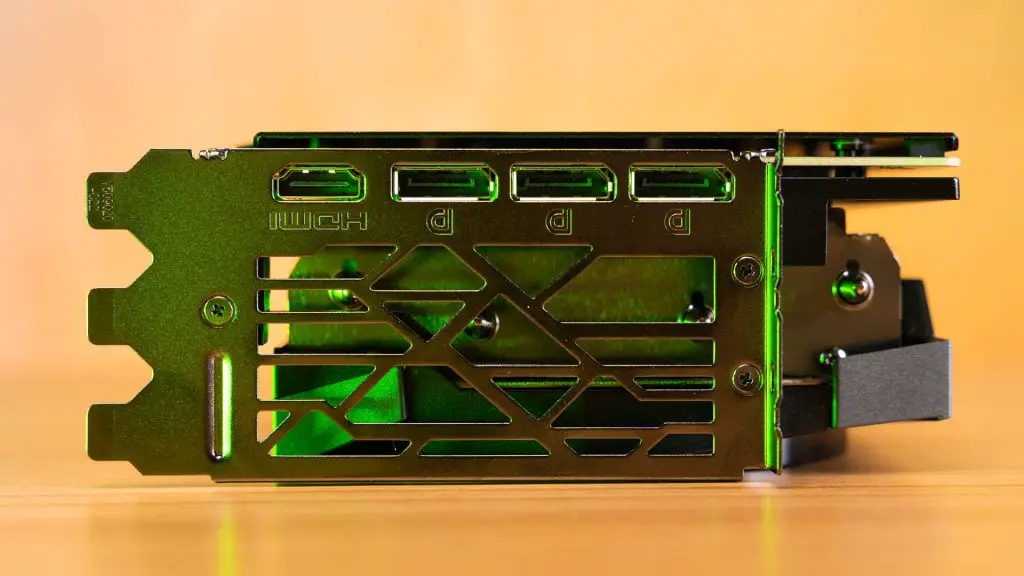
The display output is the commonly seen 3 x DisplayPort and 1 x HDMI port configuration but it’ll be great if the manufacturers can consider a 2 x HDMI ports configuration.
Test System Setup
We have put together this review by testing the RTX 4070 Ti Gaming X Trio against the RTX 4080 and RTX 3090. For our games benchmark test, we’ve selected a number of AAA titles to run at their highest possible settings using the following setup under an ambient temperature of 28°C:
| CPU | Intel Core i9-12900K |
| Motherboard | ASUS ROG Maximus Z690 APEX |
| Memory | Kingston Fury Beast DDR5 RGB @ DDR5-6000 CL30 |
| Graphics Card | GeForce RTX 3090 / GeForce RTX 4080 / RTX 4070 Ti Gaming X Trio |
| Power Supply | Cooler Master M2000 Platinum |
| Primary Storage | Kingston KC3000 2TB |
| CPU Cooler | Cooler MasterLiquid PL360 Flux |
| Chassis | Cooler Master MasterFrame 700 |
| Operating System | Windows 11 64bit |
For the test, we’re using the Intel Core i9-12900K, ASUS ROG Maximus Z690 APEX, and the Kingston Fury Beast RGB DDR5 memory kit mainly to minimize the chances of bumping into any performance bottleneck.
Games Benchmark – Raster Performance
Assassin’s Creed Valhalla
Control
Cyberpunk 2077
Far Cry 6
Forza Horizon 5
Hitman 3
Horizon Zero Dawn
Metro Exodus
Red Dead Redemption 2
Shadow of the Tomb Raider
Watch Dogs: Legion
Starting off with the raster performance, the RTX 4070 Ti did exceed our initial expectations and it’s more than just a graphics card targeted for 1440p gaming. From the numbers we have here, we can see that the RTX 4070 Ti still has a better advantage over the RTX 3090 despite having lesser VRAM than the latter.
For the titles that we’ve tested, the RTX 4070 Ti manages to handle most of the titles at 4K resolution even with the highest graphics settings, except for titles that are more graphically demanding like Cyberpunk 2077. This can be dealt with easily using DLSS or FSR but given that the implementation of FSR is still inconsistent, DLSS is still the preferred option for now.
Games Benchmark – Ray Tracing Performance
Control
Cyberpunk 2077
Far Cry 6
Forza Horizon 6
Hitman 3
Metro Exodus
Shadow of the Tomb Raider
Watch Dogs: Legion
Moving on to the ray tracing performance, this is when we can see both RTX 3090 and RTX 4070 Ti struggles to maintain over 60fps on titles like Hitman 3, Cyberpunk 2077, and Metro Exodus on 4K resolution. It’s understandable why NVIDIA marketed the RTX 4070 Ti as a graphics card for 1440p gaming, with all the settings maxed out. Though if you don’t mind lower the settings a little bit, gaming on 4K with ray tracing enabled with the RTX 4070 Ti is still possible.
DLSS 3 Hands-On
DLSS 3 is one of the main selling points of the RTX 40 series graphics cards, capable of driving more frames to improve the overall gameplay even with the highest graphics settings and ray tracing enabled.
Apart from the frequently featured Cyberpunk 2077, there are actually more titles with DLSS 3 that is on the way, and the implementation is a lot faster this time as compared to the time when NVIDIA first introduced DLSS alongside the release of the RTX 20 series graphics cards. Portal, The Witcher 3, and Bright Memory Infinite are the existing titles that are getting ray tracing and DLSS 3 support as well. The addition of ray tracing and DLSS to existing titles gives a whole new experience to these games and I’m actually looking forward to seeing the support on more of the existing titles in the near future.
Synthetic Benchmark
For the synthetic benchmarks, we have the usual 3DMark, OctaneBench, Blender Benchmark, and V-Ray Benchmark for a quick performance gauge.
In productivity benchmarks, the RTX 3090 still has the advantage with its beefy 24GB worth of VRAM but that’s only for tasks that specifically require more VRAM. In most of the tests, the RTX 4070 Ti still easily overpowers the RTX 3090 in a majority of the tests.
For 3DMark and Unigine Superposition Benchmark, we can still see the same behavior as the productivity benchmarks where the extra VRAM on the RTX 3090 still has its advantage. The RTX 4070 Ti can be seen overpowering the RTX 3090 in almost every benchmark but the Superposition 8K benchmark.
Power Draw and Thermals
Now for the power draw and thermal performance, although the power draw is pretty much the same as the rest of the RTX 4070 Ti we’ve tested so far, the thermals on the RTX 4070 Ti Gaming X Trio aren’t exactly what we expected initially.
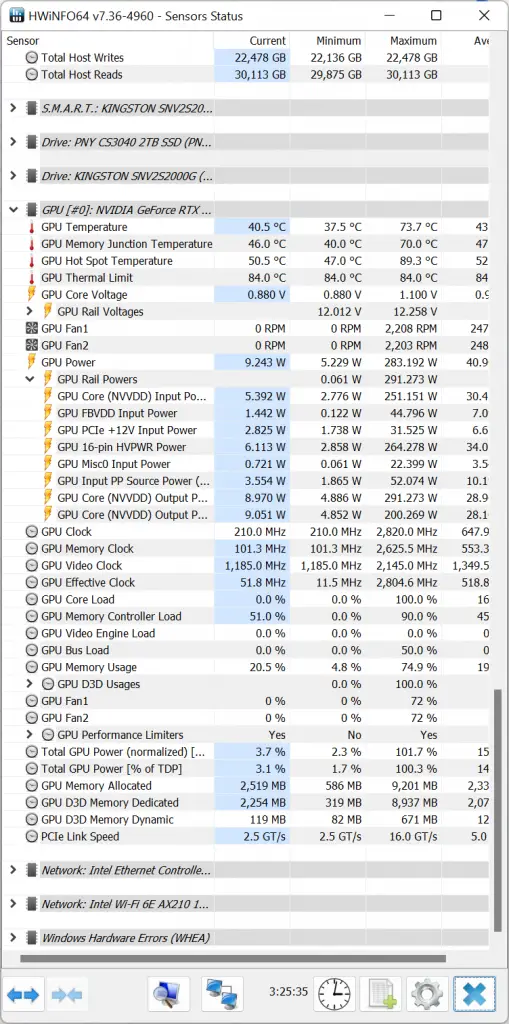
The thermal performance is okay and the fan noise is very bearable, but the load temperature on the RTX 4070 Ti Gaming X Trio is actually on the higher side if compared to other RTX 4070 Ti we’ve tested to date. The highest load temperature recorded during tests like 3DMark Time Spy, and Superposition Benchmark is at about 74°C, which is the highest we’ve seen so far. Load temperature during gaming sessions is at about 68°C, slightly lower than the highest load temperature but it’s still on the higher side compared to the average temperature that we’ve observed on other RTX 4070 Ti.
As for the power draw, the highest power draw observed during our test is at about 283W, but that’s only during synthetic benchmarks. The actual power draw during gaming sessions is only at about 260W. So, it’s reasonable why the adapter included is a 2 x 8-pin PCIe to 1 x 12VHPWR.
Final Thoughts
The RTX 4070 Ti Gaming X Trio is one of the aesthetically better-looking RTX 4070 Ti around but the cooling performance is still a bit lacking I’d say. While it can still get the job done without any issues, the overall load temperature is noticeably higher if compared to the cooling solutions from the competitors, which can easily go under the 70°C mark even during synthetic benchmarks.
Performance-wise, the RTX 4070 Ti Gaming X Trio is more than just a graphics card for 1440p gaming like what NVIDIA has advertised because of its powerful raster performance that can still handle a handful of AAA titles at 4K resolution and draw less power than the RTX 3090. That goes the same for the ray tracing performance, and the fact that DLSS 3 is only available on the newer RTX 40 series graphics cards, the RTX 4070 Ti is clearly the better choice when it comes to future-proofing even though the RTX 3090 has twice as much VRAM that can only be utilized on very specific applications or 8K gaming.
As for the price, the RTX 4070 Ti Gaming X Trio retails at RM 4,499 according to the official price list from MSI. It’s not cheap for sure and I’d say, it’s still expensive compared to the price of a base model RTX 4070 Ti or the previous gen RTX 3070 Ti. Though if we look at the performance it can deliver, I’d say it’s still a good bargain for now. One can argue that a used RTX 3090 or RTX 3080 Ti is a much better value and I do agree with that, but that’s only if you manage to find a non-mining unit and don’t really care about any of the new techs that are exclusive to the RTX 40 series cards.

